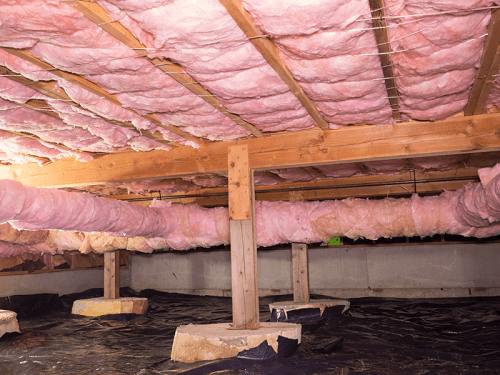Crawl space insulation plays a crucial role in maintaining the overall energy efficiency and comfort of your home. Often overlooked, the crawl space is a vital component of your home’s infrastructure that can significantly impact indoor air quality, comfort levels, and utility costs. Proper insulation not only helps regulate temperatures but also prevents moisture issues that can lead to mold growth and structural damage. Understanding the importance of insulation in this often-neglected area is essential for homeowners seeking to enhance their living environment.
This article delves into the various types of crawl space insulation, their benefits, and best practices for installation. From fiberglass batts to foam boards, each insulation option offers distinct advantages tailored to different needs and climates. By exploring these options and understanding their impact on your home, you can make informed decisions that boost energy efficiency, reduce energy bills, and create a healthier living space for you and your family.
Types of Crawl Space Insulation
When it comes to crawl space insulation, homeowners have several effective options to choose from. **Fiberglass batts** are a common choice due to their affordability and ease of installation. They can be cut to fit snugly between floor joists, providing a barrier against temperature fluctuations. Foam boards, on the other hand, offer superior thermal resistance and serve as excellent moisture barriers, making them ideal for climates with high humidity levels. Each type has its strengths, but the choice ultimately depends on your specific needs and local environmental conditions. For residents seeking expert advice on selecting the right insulation for their crawl space, consulting with Greenville Crawl Space Insulation Experts can provide invaluable guidance.

Best Practices for Installation
Proper installation of crawl space insulation is essential for maximizing its effectiveness. Homeowners should ensure that the insulation material is installed tightly without any gaps, as even small openings can lead to significant energy loss. Additionally, addressing any moisture issues prior to installation is crucial; using a vapor barrier can help protect the insulation from dampness and mold growth. Regular maintenance and inspections of the crawl space will further enhance its energy efficiency and longevity, creating a healthier environment for you and your family.
In conclusion, crawl space insulation is a vital investment in your home’s overall health and efficiency. By choosing the right type of insulation—be it fiberglass batts for cost-effectiveness or foam boards for superior moisture control—and adhering to best installation practices, homeowners can significantly enhance their indoor comfort and reduce energy costs. Not only does this proactive approach help mitigate issues related to temperature regulation and moisture retention, but it also contributes to a more durable home structure, promoting a safer and healthier living environment. Taking the time to evaluate your crawl space and implement proper insulation solutions is a crucial step toward ensuring long-term comfort and efficiency in your household.







